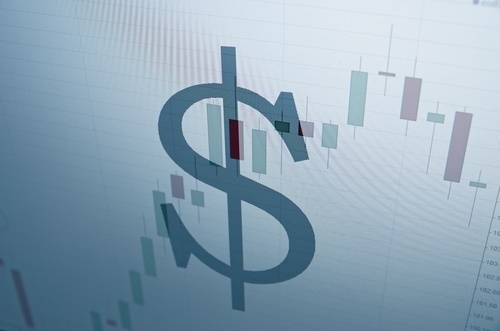
By Roger J Kerr

The New Zealand dollar has been under reasonably heavy downward pressure in global foreign exchange markets over recent weeks, the TWI Index depreciating nearly 7% from above 80.0 in early February to 74.60 today.
The latest bout of Kiwi dollar selling comes in response to the Trump administration in the US stating that they would impose stiff import tariffs on Canadian softwood lumber being shipped across the border.
The Canadian dollar was immediately sold down in the FX markets and the Kiwi promptly followed as the market’s instantaneous verdict was that any increase in trade protectionism is bad news for the NZ economy.
Since Donald Trump came to power last November, this column has warned of the risk to the NZ economy (thus to the currency’s value) if an increase in US trade protectionism was actually implemented.
Donald Trump also signalled possible tariffs on dairy imports and an investigation into aluminium imports.
Whilst slapping a 40% border tax on Chinese imports into the US has not been actioned, as promised by Mr Trump, the timber and dairy tariffs are not a good omen for New Zealand in terms of the direction the unpredictable US President is moving.
A potential consequential risk to the NZ economy is that Asian countries retaliate to the US with counter trade protectionist policies.
The risk of increased global trade barriers was seen as more of a medium to longer term downside risk to the NZ dollar, however the impact has come about much sooner than expected with the lumber and dairy tariffs.
Whilst our exporters to the US will be concerned at the tariff increases, further trade protectionist policies are unlikely until the results of the study of imports into the US that President Trump has ordered are released in three months’ time.
The NZD/USD exchange rate has weakened sharply to below the previous support area of 0.6875.
It will now require a weaker US dollar on global markets to get the Kiwi dollar back above 0.7000 again.
That does not look likely in the short-term with the US dollar having just weakened from $1.0600 to $1.0900 following the reduction in European political and economic risk after the strong showing of pro-EU and pro free trade candidate Emanuel Macron in the first round of the French Presidential election vote.
It would be a surprise if the far-right and anti-EU candidate Marine Le Pen won the final vote on Friday 7 May.
However, the polls and the markets were both wrong on the surprise Brexit and Trump votes last year!
The Euro would certainly tumble to below $1.0000 against the USD if there was a shock Le Pen victory this coming weekend.
On straight economic performance and interest rate differential grounds the EUR/USD exchange rate should not be at $1.0900, a stronger USD is likely over coming weeks as the Federal Reserve reiterate their stated plan to increase their interest rates another two more times in 2017.
As anticipated two weeks ago, the increase geo-political tensions at the time surrounding North Korea and Syria have subsided and are no longer a factor influencing currency markets.
The Japanese Yen that had strengthened to 108.00 against the USD on safe haven flows at the time has since reversed back to 111.25.
On Friday 30 April the NZD/USD rate was driven down to an 11 month low of 0.6850 as speculators added to bets that US protectionist policies would hurt trading economies.
Given the now high level of short-sold NZD market positions in place, a “short-squeeze” is more likely to push the Kiwi back above 0.6900 than further falls to 0.6700.
It is ironic that the NZ dollar is falling out of favour precisely at a time when two of the key drivers of the Kiwi dollar’s value, commodity prices and local interest rates, are pointing to a higher trend.
Futures prices for wholemilk powder are now trading over US$3,100/MT and annual inflation has jumped up to 2.2%.
The RBNZ will need to seriously revise their 2017 inflation forecasts as the actual inflation starting point is significantly higher than they anticipated and the TWI exchange rate value below 75.0 means that tradable inflation from higher import costs will be well above previous forecasts as well.
At some point this year the RBNZ will be forced by the economic data to bring forward their timing of OCR interest rate increases, an NZ dollar positive.
Upcoming Government budgets on both sides of the Tasman (Australian May 9th and NZ May 25th) will highlight the stark contrast in the health of government finances between the two countries.
Australia will again budget massive deficits over coming years, whilst NZ Finance Minister Steven Joyce will have economic policy choices with projected budget surpluses.
Expect the Australian dollar to weaken against the USD after the Aussie budget, pushing the NZD/AUD cross-rate higher to the 0.9300/0.9400 region.
Email:
Daily exchange rates
Select chart tabs
Roger J Kerr contracts to PwC in the treasury advisory area. He specialises in fixed interest securities and is a commentator on economics and markets. More commentary and useful information on fixed interest investing can be found at rogeradvice.com

We welcome your comments below. If you are not already registered, please register to comment
Remember we welcome robust, respectful and insightful debate. We don't welcome abusive or defamatory comments and will de-register those repeatedly making such comments. Our current comment policy is here.